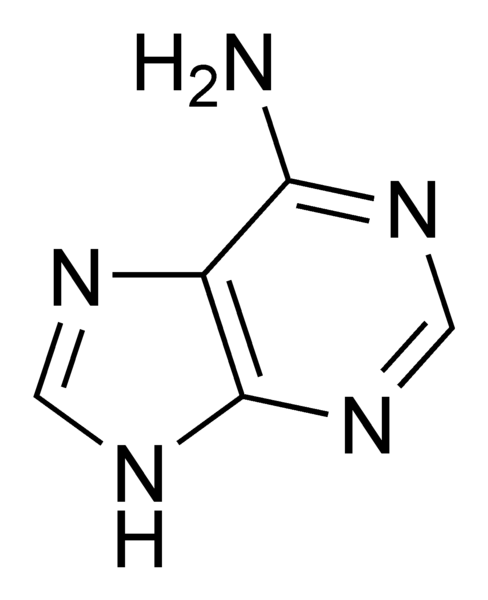DNA : Structure and functions.
DEOXYRIBONUCLEIC ACID....
As the name implies, it contains molecules called nucleotides. Each nucleotide containing a phosphate group, nitrogenous base and a sugar group. The nitrogenous base are of four types :-
Adenine

Thymine

Guanine

Cytosine

The sugar is a deoxyribose and the phosphate groups are attached to it by #### phosphodiester bonds.
As the site of genetic information, DNA molecules carry hereditary materials used in the development of all living organisms and is responsible for the inheritance of traits in humans.
Human mitochondral DNA is inherited from mother to child. There are approximately 16,000 pairs in humans.
The structure of the DNA molecule first isolated by Friedrich Miescher in 1868. He characterized the molecule as a component made up of phosphorus containing substance and called it " nuclein".
In 1940 another compelling evidence found from experimenting on virulent bacterium species demonstrated through various of chemical tests that it was DNA from virulent strain that carried the genetic information for virulence.
virulent strain of Streptococus pneumoniae transformed non virulent strain of the same bacterium into virulent strain.
Further experiments carried out by Alfred D. Hershey and Martha Chase,in which the infection of bacterial cells by a virus was studied with radioactively labeled DNA, not protein removed any doubt that DNA not protein carried the genetic information.
DNA HAS A DOUBLE HELLICAL STRUCTURE...
The DNA molecules are hellical with two periodicities along their axis. A primary one of 3.4A and a secondary one of 34A.
The four nucleotide bases occur in different ratios in the DNA of different organisms. In all cellular DNA's, the number of adenosine residues equals the number of thymidine residues and the same goes for the guanosine and cytidine.
- A+G = T+C
The two hellical DNA chains wound around the same axis to form a right handed double helix. The hydrophilic backbones of alternating deoxyribose and phosphate groups are on the outside of the double helix, facing the water surrounding it. The furanose ring of each of the deoxyribose is in the c-2' endo conformation and the pyrimidine and purine bases of both strands are stacked inside the double helix with their hydrophobic and nearly planar ring structures perpendicular to the axis.
The Phosphodiester bonds (3',5'-phosphodiester bond) linking two nucleotides in the DNA structure run in an anti-parallel direction and are unidentical in both composition and sequencing.
whenever thymine is found in chain, adenine occurs in the other giving a complementary structure.
The DNA duplex is held together by hydrogen bonds.
The DNA strands maintain complementarity due to the presence of hydrogen bonds between their base pairs, these bonds however do not contribute to the stability of the structure. The stability is contributed by metal cations, which shield the negative charges of the backbone phosphates, and by base stacking interactions between complementary base pairs.
FUNCTIONS OF DNA.
The overall function of DNA is the CODING FOR PROTEINS.
The information in DNA is initially read and then transcribed into a messenger molecule. The information in this messenger molecule is the translated into a language the body can understand. This language is one of amino acids, also known as the building block of proteins.
DNA replication also shows a vital list of functions from reproduction to maintenance and growth of cells.
THE GENETIC CODE.
DNA contain the instructions for protein construction. This instruction is written in a form called THE GENETIC CODE. It consists of "condons" of three nucleotides.
There are four bases, so the three nucleotide condons can give a combination of 64 different possibilities and these combinations are used to specify the 20 different amino acids used by living organisms.
The sequence of bases in DNA contains the information necessary to build a protein expressed in four letter alphabet of bases transcribed to mRNA and the translated to 20 amino acid alphabet necessary to build the protein.
A condon is a triplet of nucleotides that codes for specific amino acid. Translation occurs in such a way that these nucleotide triplets are read in a successive, nonoverlapping fashion. A specific first condon establishes the reading frame, in which a new condon begins every three nucleotide residues.
further readings
REFRENCES
1, 2, 3
Lehninger Principles of Biochemistry:- seventh edition by David L. Nelson and Michael M. Cox


This publication has subscribed to the writing contest thanks to @giftessiet.
writing contest thanks to @giftessiet.
For more information, click here!!!!
See the Minnowhelper contest conditions here